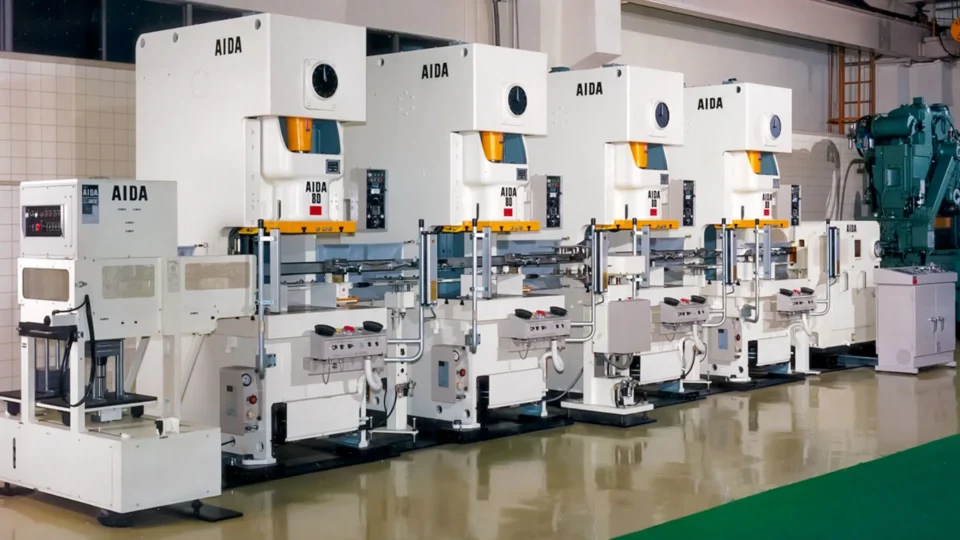Selecting the right automated press for your manufacturing needs is a critical decision that can significantly impact your production efficiency, quality, and overall business success. Automated presses are advanced machines designed to streamline pressing tasks with precision and speed, but choosing the right one involves understanding various factors and matching them to your specific requirements. This comprehensive guide will help you navigate the process of selecting the ideal automated press for your needs, ensuring you make an informed decision that benefits your business.
Understanding Automated Presses
Automated presses are sophisticated machines used in manufacturing to perform pressing tasks with minimal human intervention. They come in various types, including hydraulic, mechanical, and servo presses, each designed for specific applications. These presses are equipped with advanced control systems that allow them to operate with high precision and efficiency.
Key Factors to Consider When Choosing an Automated Press
Choosing the right automated press involves evaluating several factors to ensure that the machine aligns with your production needs and objectives. Here’s a detailed look at the key considerations:
1. Production Requirements
The first step in selecting an automated press is to assess your production requirements. Consider the following aspects:
- Production Volume: Determine the volume of parts or components you need to produce. High-volume production might require a press with higher speed and capacity, while lower volumes may be adequately served by a smaller, more cost-effective model.
- Part Size and Complexity: Evaluate the size and complexity of the parts you’ll be pressing. Larger or more complex parts may necessitate a press with a larger work area or specialized features.
Understanding your production requirements will help you choose a press that meets your operational needs and enhances your manufacturing efficiency.
2. Type of Automated Press
There are several types of automated presses, each suited for different applications:
- Hydraulic Presses: Hydraulic presses use hydraulic fluid to generate pressing force. They are known for their versatility and ability to handle high-tonnage applications. Hydraulic presses are ideal for processes requiring significant force or varying pressure.
- Mechanical Presses: Mechanical presses use a flywheel or crankshaft to drive the pressing force. They are known for their high-speed operation and accuracy. Mechanical presses are suitable for high-speed, high-volume production where precision is essential.
- Servo Presses: Servo presses use electric motors to control pressing force and speed. They offer high precision, energy efficiency, and flexibility. Servo presses are ideal for applications requiring precise control and adaptability.
Choosing the right type of press depends on your specific production needs and the characteristics of the parts you are manufacturing.
3. Force and Capacity
The force and capacity of an automated press are critical factors to consider:
- Press Force: This refers to the maximum force the press can exert during operation. Ensure that the press’s force rating meets or exceeds the requirements for your parts. Insufficient force can lead to incomplete pressing or damage to the press.
- Press Capacity: Capacity refers to the size and weight of the parts the press can accommodate. Ensure that the press’s work area is large enough to handle your parts comfortably.
Matching the press’s force and capacity to your production needs ensures that the machine can handle your requirements effectively and efficiently.
4. Control and Automation Features
Advanced control and automation features enhance the functionality and efficiency of automated presses:
- Programmable Controls: Look for presses with programmable controls that allow you to set and adjust parameters easily. Programmable controls enable precise control over pressing operations and facilitate quick changes between different tasks.
- Integration Capabilities: Consider presses that can be integrated with other manufacturing systems, such as conveyors or robots. Integration can streamline your production line and enhance overall efficiency.
- Real-Time Monitoring: Some automated presses come with real-time monitoring capabilities that provide data on performance, maintenance needs, and process parameters. This information helps in maintaining optimal performance and preventing downtime.
Advanced control and automation features contribute to smoother operations and better overall performance.
5. Maintenance and Support
Maintenance and support are essential for ensuring the long-term reliability and efficiency of your automated press:
- Ease of Maintenance: Choose a press that is easy to maintain and service. Look for features such as accessible components and clear maintenance guidelines.
- Service and Support: Evaluate the manufacturer’s support offerings, including availability of spare parts, technical support, and training. Reliable service and support are crucial for minimizing downtime and addressing any issues that arise.
Investing in a press with strong maintenance and support options helps in maintaining operational efficiency and extending the machine’s lifespan.
6. Energy Efficiency and Cost
Energy efficiency and cost considerations play a significant role in the decision-making process:
- Energy Consumption: Automated presses vary in their energy consumption. Look for presses that offer energy-efficient operation to reduce operational costs and environmental impact.
- Initial Investment and Operating Costs: Evaluate the total cost of ownership, including the initial investment, operating costs, and potential savings from improved efficiency. Consider the long-term benefits and return on investment when assessing cost.
Choosing an energy-efficient and cost-effective press helps in achieving better financial performance and sustainability.
Conclusion
Selecting the right automated press is a critical decision that can significantly impact your manufacturing operations. By considering factors such as production requirements, type of press, force and capacity, control features, maintenance needs, and cost, you can make an informed choice that aligns with your business goals.
Automated presses offer numerous advantages, including increased efficiency, consistent quality, and reduced labor costs. By investing in the right press, you can enhance your production capabilities, improve operational efficiency, and drive your business toward greater success.
Take the time to evaluate your needs and explore the available options to ensure that you choose an automated press that meets your requirements and supports your long-term manufacturing goals.


